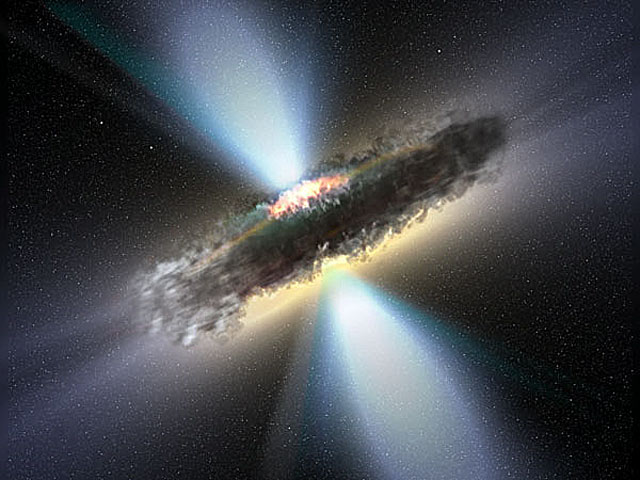Explanation: Why do some black hole surroundings appear brighter than others? In the centers of active galaxies, supermassive black holes at least thousands of times the mass of our Sun dominate. Many, called Seyfert Type I, are very bright in visible light. Others, called Seyfert Type II, are rather dim. The difference might be caused by some black holes accreting much more matter than others. Alternatively, the black holes in the center of Seyfert Type II galaxies might be obscured by a surrounding torus. To help choose between these competing hypotheses, the nearby Seyfert II galaxy NGC 4388 has been observed in X-ray light recently by many recent Earth-orbiting X-ray observatories, including CGRO, SIGMA, BeppoSAX, INTEGRAL, Chandra, and XMM-Newton. Recent data from INTEGRAL and XMM-Newton have found that the X-ray flux in some X-ray colors varies rapidly, while flux in other X-ray colors is quite steady. The constant flux and apparent absorption of very specific X-ray colors by cool iron together give evidence that the central black hole in NGC 4388 is seen through a thick torus composed of molecular gas and dust.
1999 2000 2001 2002 2003 2004 2005 2006 2007 2008 2009 2010 2011 2012 2013 2014 2015 2016 2017 2018 2019 2020 2021 2022 2023 2024 2025 |
Yanvar' Fevral' Mart Aprel' Mai Iyun' Iyul' Avgust Sentyabr' Oktyabr' Noyabr' Dekabr' |
NASA Web Site Statements, Warnings, and Disclaimers
NASA Official: Jay Norris. Specific rights apply.
A service of: LHEA at NASA / GSFC
& Michigan Tech. U.
|
Publikacii s klyuchevymi slovami:
NGC 4388 - black hole - chernye dyry
Publikacii so slovami: NGC 4388 - black hole - chernye dyry | |
Sm. takzhe:
Vse publikacii na tu zhe temu >> | |
